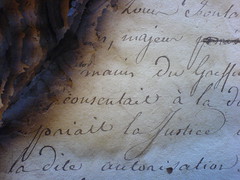I wrote my first book, Silence is Death: The Life and Work of Tahar Djaout, on the basis of a public archive, using only texts that had been published. But with my second book, I discovered the pleasure of working with manuscripts.
In 2000, I came across a large collection of letters in the National Library of Lithuania. The letters were written by a librarian who had aided the Jews of the Vilnius Ghetto by hiding them in the university library where she worked, finding children places in orphanages, supplying false documents, food, money, clothes. Her name was Ona Šimaitė. I estimate that she wrote somewhere between thirty-five thousand and fifty-thousand letters during her adult life. Many of these survived and made their way into archives.
For years Šimaitė’s writings perplexed me. Pages and pages of diaries, manuscripts and notes. Heroic deeds, travels, tragedy, hardship, poverty. Revolution. Her writing is both mundane and sophisticated. Flat and poetic. Tedious and enlightening. And so began our long and intimate journey together.
You can find translations of Šimaitė’s letters here (The first link is a google books link, and the second requires a subscription. I’m working on permission to post PDF versions of both on the site, and will do so as soon as I can):
Šukys, Julija.“Lost and Found in Vilna: Letters From a Librarian.” PMLA 118 (2): 302-17, 2003.
[Photo by timtom.ch]



